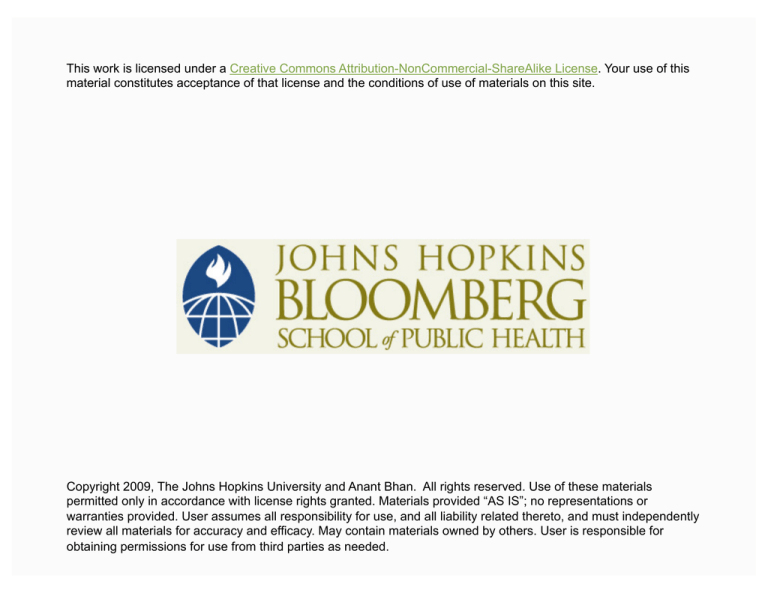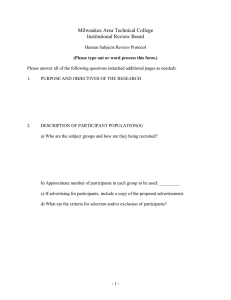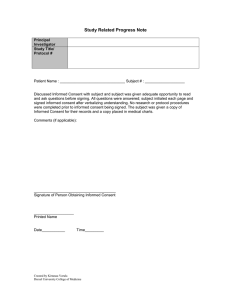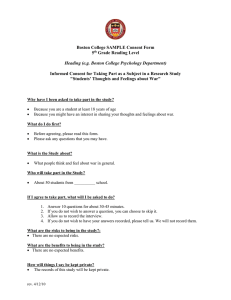
This work is licensed under a Creative Commons Attribution-NonCommercial-ShareAlike License. Your use of this
material constitutes acceptance of that license and the conditions of use of materials on this site.
Copyright 2009, The Johns Hopkins University and Anant Bhan. All rights reserved. Use of these materials
permitted only in accordance with license rights granted. Materials provided “AS IS”; no representations or
warranties provided. User assumes all responsibility for use, and all liability related thereto, and must independently
review all materials for accuracy and efficacy. May contain materials owned by others. User is responsible for
obtaining permissions for use from third parties as needed.
Informed Consent: What It Is and What It Includes
Anant Bhan, MBBS, MHSc
Ethical Social and Cultural Program for the Grand
Challenges in Global Health Initiative
Objectives of This Session
Why informed consent is important
Identify the elements of informed consent
Identify specific categories of information to include in the
disclosure of the informed consent process and form; regulatory
requirements
Identify strategies to improve the consent form
3
Section A
Introducing Informed Consent
Why Informed Consent?
Public Domain
5
What Is Informed Consent?
It is a process of communication between a research participant and
researcher that results in the participant’s authorization or
agreement to undergo a specific research intervention (modified
from the AMA definition)
6
Informed Consent (IC)
Is an expression of the ethical principles of “respect for persons”
and “autonomy”
Persons have the opportunity to choose “what shall and shall not
happen to them”
Those with diminished autonomy need to be protected
Source: NIH. (2000). OHSR guidelines for writing informed consent forms.
7
Walter Reed Commission
8
Nuremberg Code
The voluntary consent of the human subject is absolutely essential
- Legal capacity to consent
- Be able to exercise free choice
- “Should have sufficient knowledge and comprehension … to
make an understanding and enlightened decision”
9
ICMR Guidelines and IC
Indian Council for Medical Research (ICMR) guidelines and IC
- Necessary to obtain IC for any form of research (from
participant or from legal guardian if participant is unable to
consent)
- Informed consent document has two parts
1. Informed consent form which both researcher and
participant sign
2. Study information sheet
10
Informed Consent Is Not Just the Document
IC is a process and not just a requirement to get a signature/thumb
imprint on a form
Starts before research is begun and continues throughout the
duration of the study
11
ICMR Guidelines and IC
Participation must be voluntary
Participants must be “fully apprised of the research”
The investigator must obtain informed consent
- Responsibilities and information that must be provided
Assent be obtained, where possible, for minors
Requirement for consent can be waived by an ethics committee if
risk is minimal (e.g., collecting data from subjects’ records)
12
Elements of Informed Consent
Disclosure
Comprehension documentation
Voluntariness
13
IC
IC is a process wherein …
- All relevant information about the study is provided to the
participant
- The participant understands the information and clarifies any
doubts/questions, and
- Decides to participate voluntarily in the study
14
IC and Language
Use simple wording that is not too technical
In a language that the person understands (need for trained
personnel and translations of the consent forms)
Discussed in detail by a study team member well versed with the
research protocol
15







